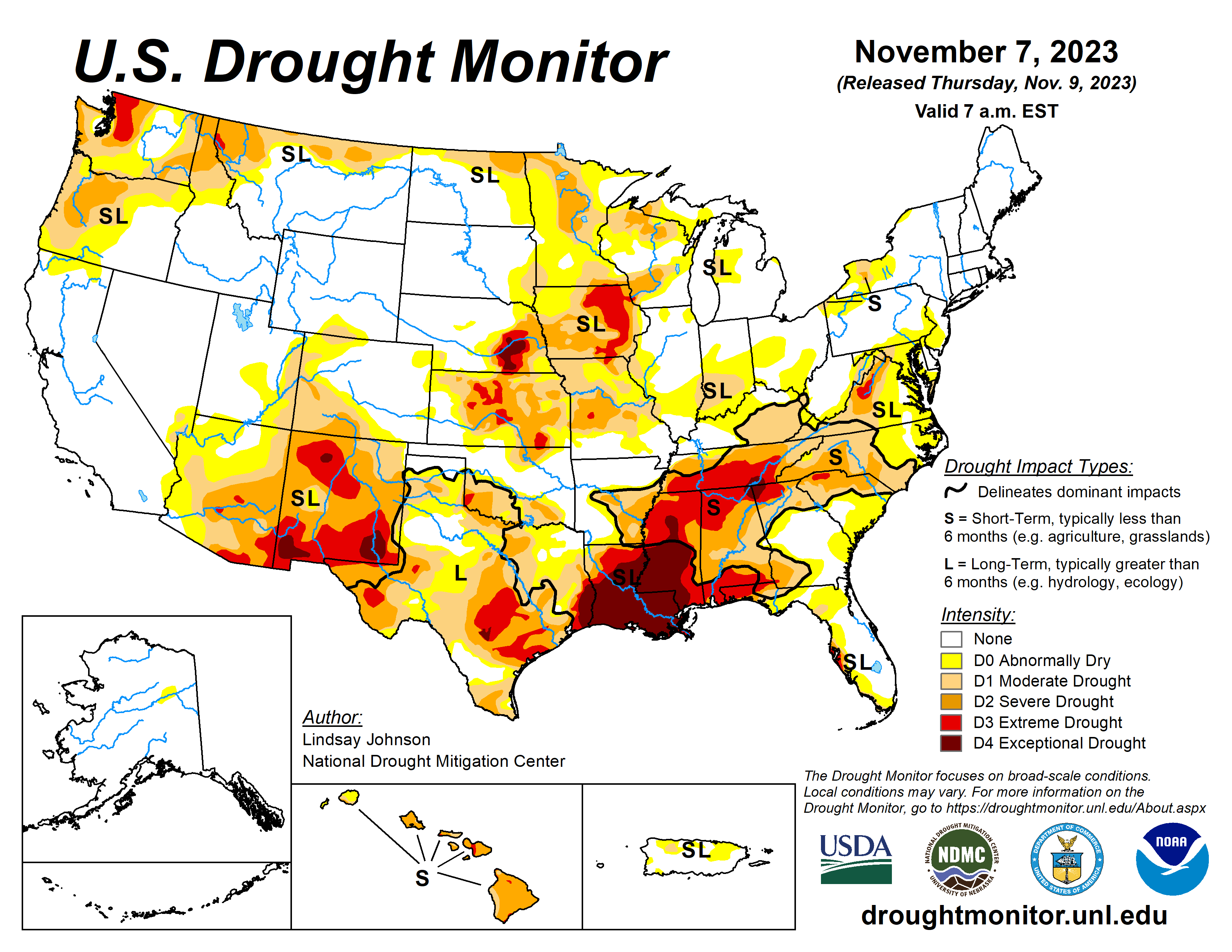Ag News,
Beef,
Corn,
Cotton,
Cow Calf,
Crops,
Dairy,
Drought,
Drought Monitor,
Feeder,
Forage Crops,
Grain Sorghum,
Horses,
Livestock,
Seedstock,
Sheep and Goats,
Soybeans,
Stocker,
Sunflowers,
Swine,
Weather,
Wheat
Persistent drought continues in South

Residual impacts from the prior week’s storm continued to bring some
improvements to the Pacific Northwest, northern Plains and upper Midwest.
However, in the South and Southeast, conditions continue to rapidly
deteriorate, leading to flash drought and widespread expansion of drought
conditions. The U.S. Drought Monitor is jointly produced by the National
Drought Mitigation Center at the University of Nebraska-Lincoln, the U.S.
Department of Agriculture and the National Oceanic Atmospheric Administration.
(Map courtesy of NDMC.)
South
Dry conditions continued across the South, with the entire region at or below 25% of normal precipitation. Despite this lack of precipitation, there was some relief in terms of temperatures, which were 2 to 4 degrees Fahrenheit below normal. Areas of Louisiana and Mississippi were up to 8 degrees below normal.
Louisiana and Mississippi did not see any drought relief, with 1-category degradations across the two states. In Louisiana, over 50% of the state is in Exceptional Drought, and in Mississippi rapid deterioration spilling eastward from Louisiana resulted in 1-category degradations. Tennessee is also in Extreme Drought, and Exceptional Drought was introduced along the tri-state border, along with Alabama and Georgia. Extreme and Severe drought also migrated northward. Texas and Oklahoma remained largely unchanged, with some improvements in central Texas and status quo conditions for Oklahoma.


